
One of my most time-consuming hobbies is by far cycling, primarily road cycling. I have two road bikes — one is located at home and the other at my holiday cottage. Let me be quite clear: I am just an amateur rider; I have never participated in any race! However, I enjoy watching races. Whenever there is a road cycling event on Eurosport, I try to watch it. So it's no surprise that at the beginning of May this year, I spent quite a lot of time on my sofa, closely following the first Grand Tour of the season — the Giro d’Italia.
If you're not familiar with the world of road cycling, the Grand Tours are the three most prestigious races in the sport, each lasting three weeks. The first is the aforementioned Giro d’Italia, which begins in early May, followed by the most famous of them all — the Tour de France in July. The last is La Vuelta a España, held at the end of August. Usually, they are simply referred to as the Giro, the Tour, and the Vuelta. Only 22 teams are allowed to participate in each of these races, with each team consisting of 8 riders.
Eighteen teams from the "first league" (called UCI WorldTeams) have the automatic right to participate, while the other four are selected by the organizers from the 17 teams in the "second league" (called UCI ProTeams). Among these 17 ProTeams is a particularly interesting and relatively young team from Switzerland — the Tudor Pro Cycling Team.
The team was originally established in 2019 under the name Swiss Racing Academy, with no great ambitions. It competed at the basic professional level (UCI Continental Team). But in 2022, the famous Swiss cyclist Fabian Cancellara took over ownership of the team. He then persuaded the Tudor company to become the official main sponsor, leading to the team being renamed Tudor Pro Cycling Team. In 2023, the team was upgraded to ProTeam status.
As of now, the team is already ranked near the top 20 in the official UCI rankings, with good chances of advancing to WorldTeam status soon (at the end of each season, this ranking is crucial for obtaining a WorldTour licence for the next year).
Since 2023, Tudor has also been the official timekeeper of the Giro. Thanks to this partnership, the Tudor Pro Cycling Team was selected by the Giro organizers to participate in the 2024 edition of the race, as one of the four invited ProTeams. This marked the team’s very first appearance in any of the Grand Tours.
I follow the Tudor team for rather unusual reasons. The most obvious one, of course, is that it’s the only cycling team named after a watch brand — and not just any brand. The second reason is that the team uses BMC bikes, the same brand as my home bicycle (the other one I own is a Merida, by the way). And the third reason? In my opinion, they have the best-looking jerseys of all the teams. No, I don’t own the official replica of their jersey — but only because I already have too many from the time before Tudor even existed.
Now let’s go back to my sofa in May 2024, watching one of the early stages of the Giro on Eurosport. As it happens all too often on this channel, the live coverage was interrupted by a commercial break. And then, this commercial video appeared:
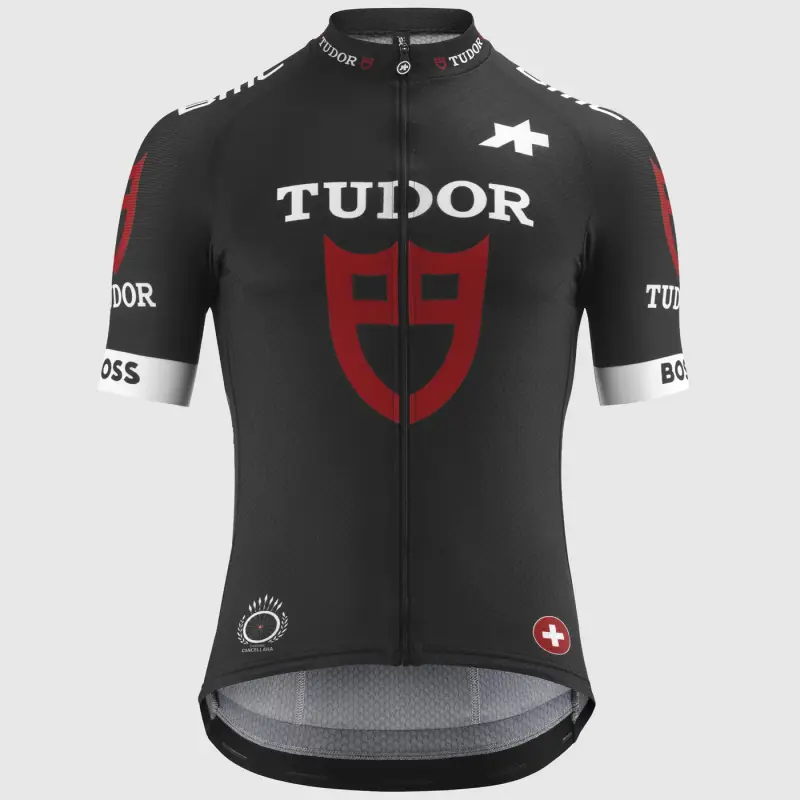
The Pelagos is, in my personal opinion, one of the rare Tudors I would actually consider buying (alongside the Tudor Heritage Advisor, which is a mechanical alarm watch and fits nicely into that category within my collection). So I was already quite familiar with the Tudor Pelagos FXD Chrono dedicated to Alinghi Red Bull Racing — the Swiss challenger for the famous America’s Cup sailing competition. I even considered buying one (there was one offered at a very reasonable price on our local watch forum), as I genuinely liked it.
However, the connection to the Alinghi sailing team was a major drawback for me, since I’m completely uninterested in that team — or sailing as a sport, for that matter.
But this new Pelagos FXD Chrono, called the Cycling Edition, felt like something different — something fresh. It had a strong link to a sport I truly enjoy, and to top it off, it looked fantastic.
I had previously heard that Tudor once made a special cycling edition of the Black Bay Chronograph, but that model was not available for sale — it was given exclusively to members of the Tudor cycling team. So my first reaction was that this new watch would once again be a very limited edition, targeted at a narrow audience and, of course, priced very high.
Still, I decided to check the official Tudor website for more information. And I was more than pleasantly surprised when I discovered that the watch was a regular production model, placed in the same very reasonable price category as the Alinghi Red Bull edition — €5,400.
"This is going to be my next watch," I told myself. A few minutes later, I sent an email to the local AD asking about the availability of the watch. The AD had no idea what I was talking about — they even offered me the Alinghi version instead! I also checked Chrono24, but at the time, there were no listings available yet. A few days later, I visited the AD in person. I showed them the watch on Tudor’s official website, and they put me on a waiting list, promising to inform me when the watch arrived.
At the beginning of June, the first pieces began appearing on Chrono24 — but the prices were outrageous. The first listing started at nearly €10,000! Week by week and step by step, prices began to fall, but they still remained far above the official retail price. A kind of Rolex syndrome, I would say.
Fortunately, even though Tudor is Rolex’s sibling brand, prices finally stabilized around the recommended €5,400 mark by early August. I was even able to buy mine for €5,000. Just a week later, my local AD called me to say the watch had arrived. A bit too late...
But the important thing is this: it’s not a problem to get one — so don’t pay over the recommended retail price!
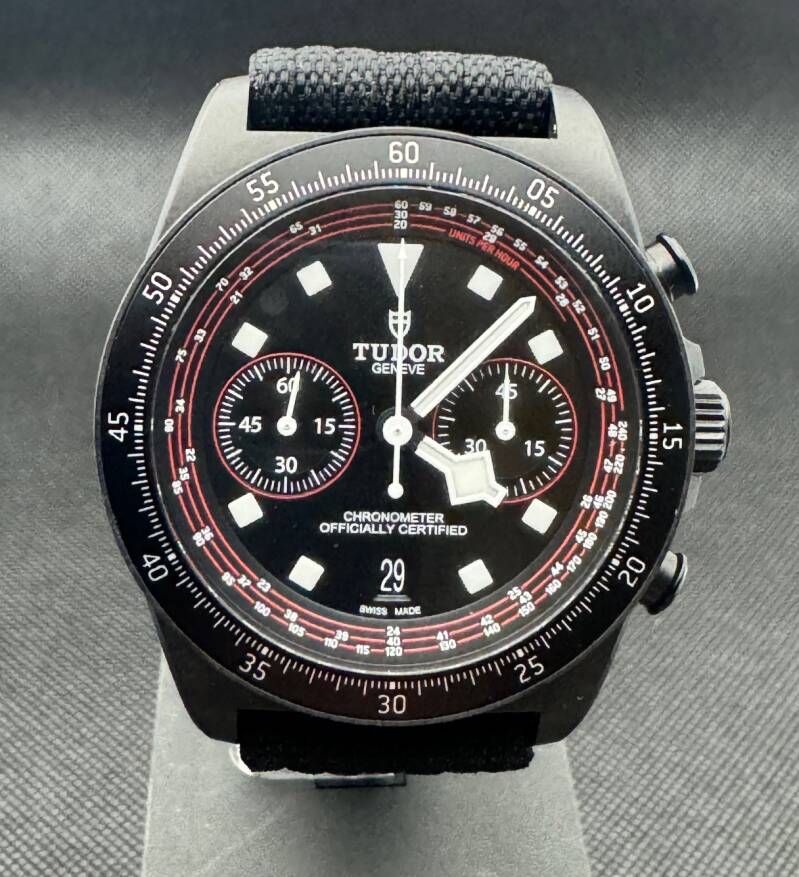


My first impression of the watch as a whole was mixed. Visually, the watch looks great. The black carbon case is very precisely crafted, and the inner red tachymeter ring really stands out as something different. The tachymeter is also, to be honest, the only real connection to cycling.
It spans three full circles and can measure speeds ranging from 240 km/h down to 20 km/h. However, even this scale isn’t ideally designed for cycling. For better usability, it would have made more sense to begin the first full circle a bit later — for example, starting from the 6 o’clock position where the speed is 120 km/h — and extend it down to at least 15 km/h. After all, no cyclist goes faster than 120 km/h, even on the longest descents, while on serious climbs, the speed can easily drop below 15 km/h.
The bezel is fixed and serves only as a minute scale, since there’s no room for it on the dial due to the multi-line tachymeter. That’s acceptable, but it does represent a departure from the classic Pelagos diver’s platform.
On the other hand, the hands, hour markers, and overall case shape clearly show that what we have here is still a “true” Pelagos.




It’s a pity that the Tudor shield on the crown isn’t red — like it is on the Tudor team’s jersey. That small detail would have added a nice visual link to cycling and further emphasized the theme.
Interestingly, although the Alinghi FXD Chrono — the “predecessor” to this model — offers 200 meters of water resistance, the Cycling Edition has only 100 meters. Of course, that’s more than enough for cycling. But considering the fixed bezel and reduced water resistance, it seems Tudor deliberately shifted the Pelagos platform away from its diving roots, transforming it into more of a “continental” or land-oriented watch.
The chronograph pushers are not screw-down — only the main crown is.
What puzzles me is the choice of chronograph layout. Tudor’s in-house chronograph movement is based on the Breitling B01, which in its standard version features a 30-minute counter and a 12-hour totalizer. However, Tudor opted for just a single totalizer — a 45-minute minute counter. While this design is certainly cleaner and more elegant, it’s also less practical. If you want to time anything longer than 45 minutes, you’re forced to do mental calculations. For any serious chronograph use, this is a clear disadvantage compared to the original B01 layout.
Another aspect I’m not particularly fond of is the use of fixed lugs. That’s a big downside if you’re a fan of changing straps. The only viable option here is single-piece straps. And as you probably know, this essentially limits your choices to nylon straps — and, with a bit of luck, a few leather options. In the case of leather, it’s usually best to go for custom hand-made straps that are thinner under the case, to accommodate the fixed lugs.
The only real reason I can think of for using fixed lugs is to improve the structural integrity of the lugs and case as a whole. Since the entire case is made of carbon, traditional drilled lugs might be more prone to chipping or structural weakness. But that’s just my guess.
The caseback is rather boring — there’s a lot of empty space, and surprisingly no reference to the “Cycling Edition,” which one might reasonably expect.





The original black nylon strap was another disappointment. While the buckle and strap keepers are made of carbon, which is a nice touch, the strap itself looks and feels cheap. It simply doesn’t match the level of elegance that the watch case delivers. Of course, in general, you can’t expect too much from a nylon strap — but still, it’s a shame Tudor didn’t include an additional black leather strap with red stitching for a more refined, less sporty look. The watch itself is certainly suitable for elegant occasions, and considering the fixed lugs, such a strap would add real value.
Even though the strap edges are nicely stitched and reinforced, the strap is still not as stiff as a leather or rubber one. As a result, threading it through the carbon keepers is slightly annoying and less smooth than one would expect from a €5,000 watch.

The lume on the dial and hands clearly reveals the watch’s diver origins — it’s very bright, long-lasting, and simply excellent. I particularly like its bluish tone, which adds a touch of character.
The packaging, on the other hand, is again a bit of a letdown. It comes in the standard Tudor box, with no reference to cycling whatsoever. There’s a small drawer inside for an additional strap — but as already mentioned, unfortunately, no extra strap is included.
After the initial inspection, the moment finally came to put the watch on my wrist. My very first impression? The watch is incredibly light — just 40 grams in total. Given the carbon case and nylon strap, this was to be expected, but the sensation is still quite unusual. Until I got used to it, I actually found myself checking now and then to make sure the watch was still on my wrist.
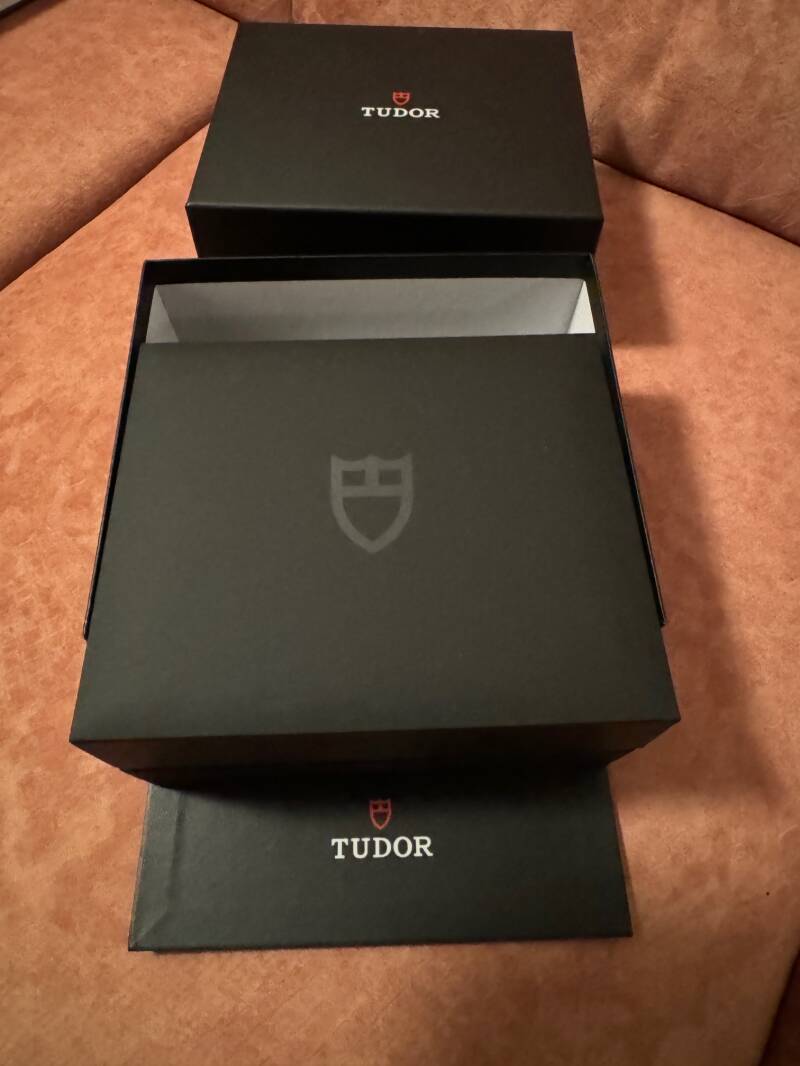
The 43mm case, with a 51mm lug-to-lug span and 14mm thickness, is almost the perfect size for my wrist. The 100 meters of water resistance performed well under normal swimming conditions — I didn’t test it in deeper waters.
Naturally, I also tested the watch on the bike. Thanks to its light weight, wearing it while cycling was no problem at all. The nylon strap also proved its advantages: there was minimal sweating underneath, even on longer rides. In seawater, the nylon strap surprisingly outperformed rubber — a pleasant and unexpected bonus.
Will this watch replace my Garmin cycling computer? Absolutely not! I would never even consider it, as the watch simply doesn’t offer even the basic functions we’ve come to expect from any entry-level cycling computer (or sports watch). To be quite straightforward: I will never wear it during a ride again. I’m afraid the watch simply wouldn’t survive a potential crash — which, let’s be honest, can always happen.
However, I did find one quite useful cycling-related function for the watch — and it’s connected to watching, not riding. At the time of writing this review, La Vuelta is underway (and I see commercials for this watch at least three times a day...). Since the live broadcast always displays the remaining kilometers in the top-left corner of the screen, I can use the watch’s tachymeter to calculate how fast the leading riders are going. Apart from that — and the fact that the watch shares a similar carbon structure with bicycle frames — this is really the only thing that justifies the “Cycling Edition” name.
I almost forgot to mention that this watch fully deserves its chronometer certificate. Over two full weeks of constant wear — day and night, on land and in water, while walking, cycling, swimming, and sleeping — the watch gained just 10 seconds. That’s less than +1 second per day.
All in all, I must admit that I liked the watch more and more with each passing day. I even got used to the nylon strap and eventually dared to wear it to the office under a shirt sleeve. This watch has become one of my favorite everyday pieces!
I can honestly recommend this great-looking watch to anyone — in my opinion, it offers a very decent and fair price compared to the competition. Just don’t expect it to be your cycling watch.
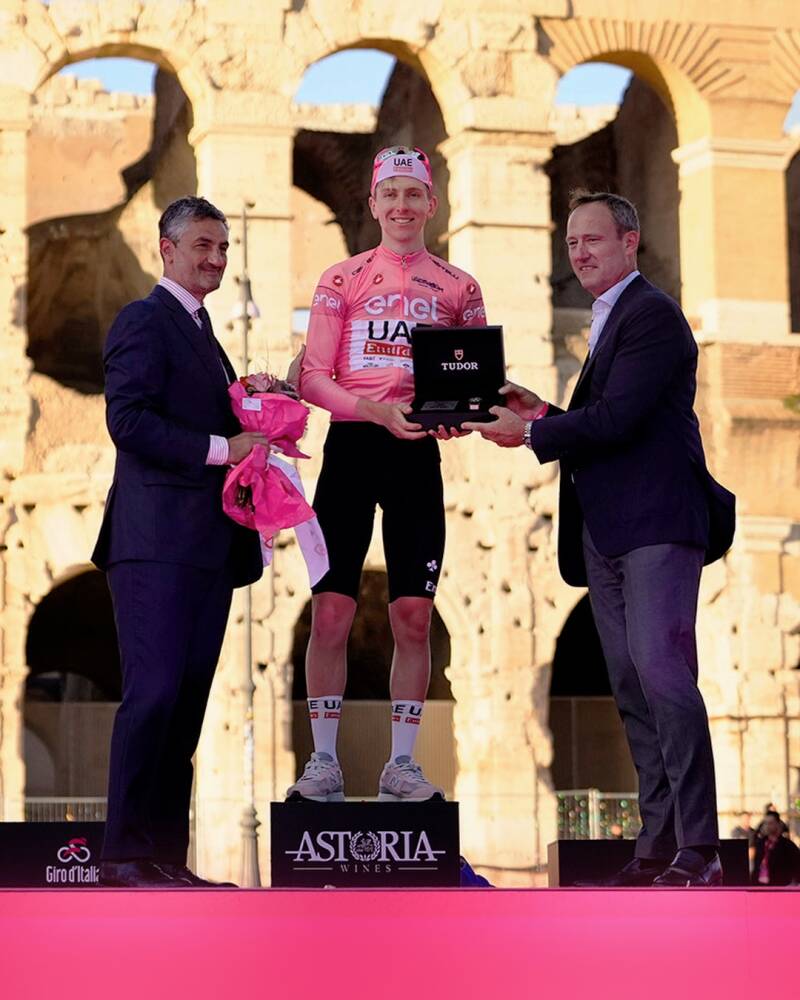
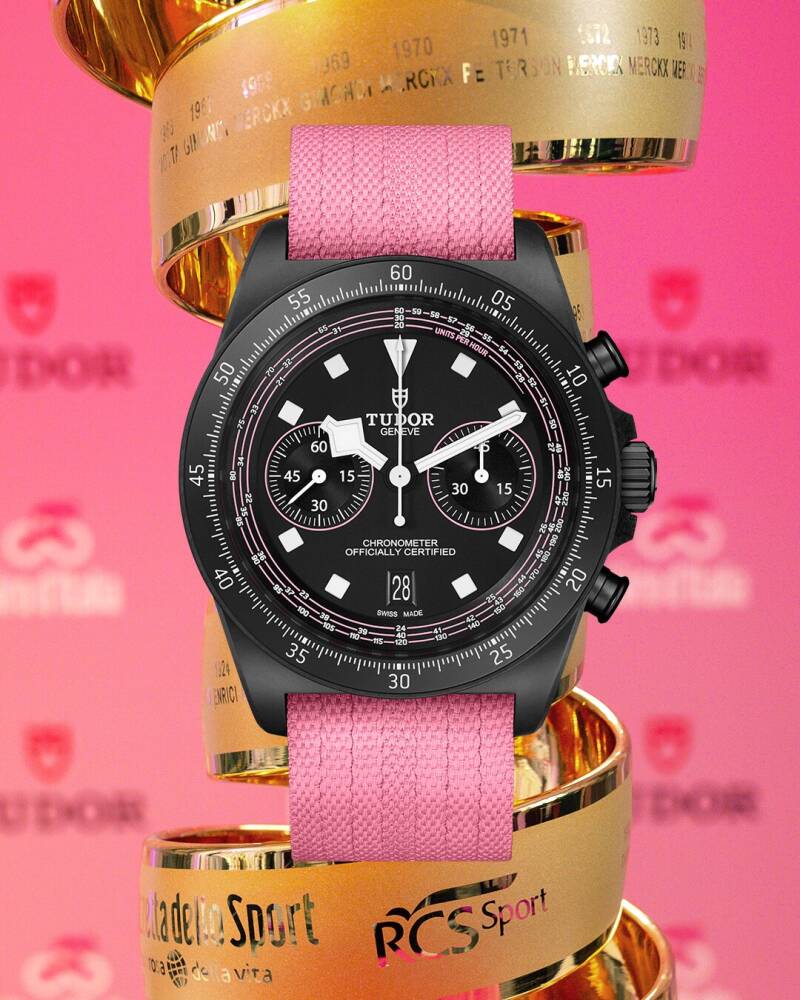
As the official timekeeper of the Giro, Tudor also prepared a very special edition of this watch for the race winner. On this unique version, the strap is pink, and the red accents on the dial are replaced with pink — reflecting the famous maglia rosa (pink jersey), which is worn by the leader of the Giro throughout the race and by the winner on the final podium. (In comparison, the leader wears a yellow jersey in the Tour de France, and a red one in the Vuelta.)
This year, Tadej Pogačar absolutely dominated the race and won with an enormous time gap. Unfortunately, it’s highly unlikely he will ever actually wear this watch — as he is an official ambassador for the Richard Mille brand and has even worn RM watches during some stages of the race.
Still, despite that, this award version gives a whole new level of meaning to the term Cycling Edition. Because now, one can rightfully say:
This is the watch given to the Giro d’Italia champion.
P.S. The official timekeeper of both the Tour de France and La Vuelta is Tissot.
P.P.S. Tadej Pogačar also went on to win the Tour de France, while Primož Roglič claimed victory at La Vuelta. So this year, all three Grand Tours were won by Slovenian riders — a truly fabulous result for such a small country!














Add comment
Comments